Three hundred years they are the first on the battlefield
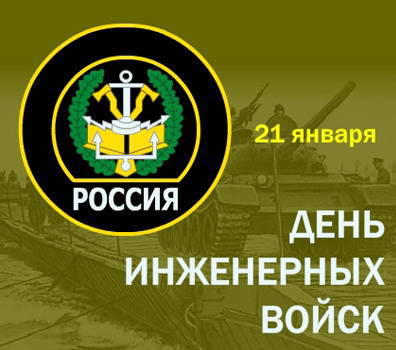
Year of birth of engineering troops in Russia is considered to be 1701 year. This year, Peter I, as part of his military reform, signed a decree creating the first engineering school.
Eleven years later, in 1712, by the decree of the same Peter I, the organization of military engineers' divisions was fixed, the staff and the number of engineering units in the artillery regiment were determined and approved. The regiment consisted of: a pontoon team, a mine company and an engineering team.
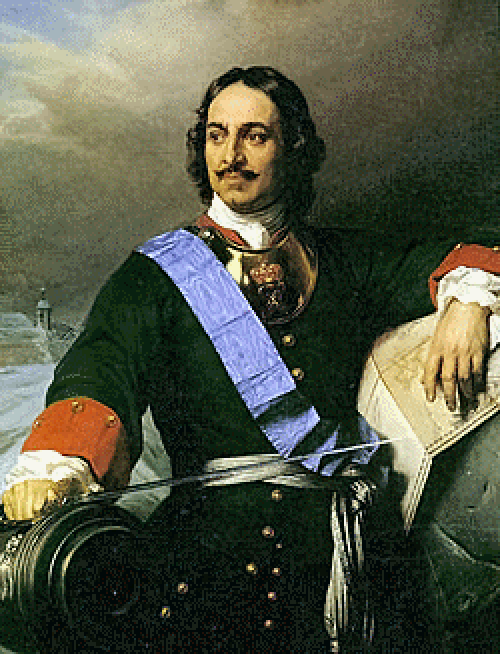
Peter I also launched large-scale engineering training and training not only for artillery regiments, but also for the rest of the regular troops as a whole.
Peter I's decree from 1713 of the year said: “It was ordered that officers and noncommissioned officers of the Preobrazhensky regiment who were in St. Petersburg in winter time would not spend time in idleness and boils, but study engineering.” In 1721, this order spread to other regiments. An additional incentive for officers in training engineering skills was to increase the rank: “It is necessary for officers to know engineering, and for noncommissioning officers of the trainer, but he will not know anything, he will not be able to do anything higher”.
With the development of military engineering, the use of engineering units expanded and the question arose about the separation of engineering services from artillery. Therefore, from 1724, the engineering units received a new staff and began to be part of the troops, as separate units, they were also included in the fortress garrisons, and an engineering inspector appeared in each province.
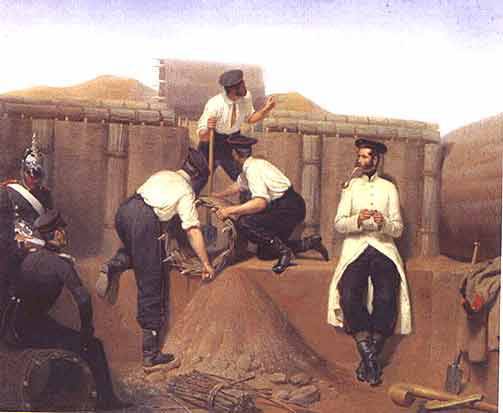
The transformations that began to take place under Peter I determined the organization and development of military engineering in Russia for the entire 18 century.
At the beginning of the Seven Years' War, engineering units consisted of military engineers, engineering students, conductors (military rank conferred to draftsmen and artists in the main, district and field engineering departments), a company of miners and artisans. The field army in 1756, in the first year of the war, included only a mine company and a pontoon team that was under artillery. During the fighting, it became clear that these units were not enough, so in the winter of 1757, the mine company was replaced by an engineering regiment, and the pontoon team was deployed in a company of three sections, thirty people in each section. In total, the engineering regiment consisted of 1830 people and had all the necessary equipment and tools for the staff.
In the course of the battles of the Seven Years' War, there was often a need for quick guidance of crossings, and the technique of pontoon formations was improved. Design engineering thought also began to develop, so in 1759, by captain A. Nemov, a canvas pontoon was developed and successfully used in combat, which was distinguished by its low weight, simplicity of construction, and considerable cheapness compared to copper pontoons.
In the 1771 year, in addition to the already existing units, a "pioneer battalion of the General Staff" is being formed to facilitate bridge-crossing work during the combat operations of field troops. But in 1775, the battalion was disbanded, replaced by another pontoon company and a specialist in road and bridge service, who was part of the company of infantry regiments.
By the end of the 18 century, the number of engineering troops increased significantly, which however led to cumbersome and scattering engineering units, and moreover, in general, the engineering service remained in the artillery, which did not meet the strategic principles of mass armies.
Therefore, at the beginning of the 19 century, in the 1802 year, with the advent of the military ministry, the engineering service finally separated from the artillery and got its department called the Engineering Expedition. Under the command of the Artillery Expedition only pontoners remained.
In the period from 1803 to 1806 years, taking into account the combat experience, several more reorganizations of the engineering troops of the Russian army were carried out.
By 1812, the current army consisted of 10 miner and pioneer companies, 14 engineering companies were in fortresses, and pontoon companies attached to artillery also participated in the fighting.
Under the command of M.I. Kutuzov, all the pioneer companies were united under the general command of General Ivashev, the chief of communications of the army, who organized two military brigades of them.
Kutuzov also ordered Ivashev to increase the mobility of the engineering units during the counterattack to organize a team of equestrian warriors to repair the roads to the advancing army. This is how the first ones were created. stories horse pioneer squadrons.
Before the overseas campaign, the number of engineering units was brought to the 40 company (24 — pioneer, 8 mine, and 8 sapper). The task of the pioneer formations was to build bridges, roads, field fortifications, as well as the destruction of enemy barriers and fortifications in the direction of movement of their troops. The miners and sappers were used in the construction of long-term fortifications, in the attack and defense of fortresses. Pontoners were engaged in floating bridges.
The military experience of the Patriotic War 1812 of the year showed the need to increase the number and regular reorganization of the engineering troops. In the period from 1816 to 1822, such a reorganization was carried out, a transition was made to the battalion system, each army corps received one sapper or pioneer battalion, the pioneer and sapper battalions themselves were consolidated into three pioneer brigades.
With 1829, the pioneer battalions were renamed the sapper, a little later in 1844, the mine companies also became known as the sapper. From this moment on, all engineering units became known as deminers.
The reorganization also touched pontoon companies, they were transferred to the engineering department's subordination and entered into the pioneer and sapper battalion structures, and began to provide with ferries not only artillery, but also other types of troops. At the same time, on the basis of the 1812 fighting, the army and guards equestrian squadrons were organized.
Thus, as a result of the reorganization by the end of the first quarter of the 19 of the 20th century, the engineering troops were completely separated from the artillery and received the status of an independent branch of the active army, their number was just over 21 th thousand people (2,3% of the entire army ).
By the beginning of the Crimean War (1853 — 1856), the Russian army had three sapper brigades.
The main drawbacks of the engineering troops of that time were poor technical equipment and a significant separation of the sapper battalions from the offices of the army corps and brigades they provided.
Over time, with the development of production and technical capabilities and technology, with the emergence and construction of highways and railways, with the beginning of the widespread use of telegraph and telephone, the technical equipment of the army also developed.
Changes in the material and technical conditions of warfare led to new military reforms carried out in the Russian army from 2860 to 1874.
The engineering troops, which have undergone the next necessary reorganization and significant changes, did not stand aside either. As part of the engineering troops, railway battalions (1870), military camp telegraph parks (1874) appeared, pontoon battalions had Tomilovsky metal park at their disposal.
In engineering units there is a new specialist underwater mine. For the qualified training of such specialists, a special educational institution is created - technical galvanic, which was opened in the spring of 1857.
By the beginning of the Russian-Turkish war (1877-1878), after undergoing another reorganization, the engineering troops numbered 20,5 thousands of people (2,8% of the total army). After the war, new specialties were added to them: pigeon connection and aeronautics, and the number of electrical, railway and mine-fortress divisions increased. Additional field engineering parks were also established.
By the end of the 19 century, the engineering troops were an independent branch of the armed forces and had clearly defined tasks and objectives in the conduct of hostilities. Their task was to conduct serf construction, provide combat operations for infantry, cavalry and artillery, mine warfare, perform engineering tasks during the defense and siege of fortresses, construct ferries and railway lines, and also telegraph lines. To perform these tasks, the engineering troops included electricians, military railway workers, telecommunications operators, aeronauts, miners, pontooners and sappers.
At the beginning of the 20th, the engineering forces finally formed a separate branch of the army, acquired the status of army innovators. Having talented design engineers in their ranks, they became the conductor of all military technical innovations, both in the army and on navy.
The Russo-Japanese War (1904 – 1905) showed the increased role of the engineering troops and gave many examples for providing and organizing defense. The generalization of the experience of the Russian-Japanese war as a whole, and especially of the heroic defense of Port Arthur, was a significant contribution to the further development of military engineering thought. It was during this war that the field fortification, both the main and one of its most important forms — solid trenches of great length, was finally established as a necessary means of defense. The unsuitability of redoubts and other bulk fortifications was revealed.
For the first time, defensive positions in the rear were erected in advance. In the course of the defense of Port Arthur, a solid, fortified position was created, the fort belt of Port Arthur fortress was turned into it, where long-term and field fortifications mutually complemented each other. Because of this, the storming of the fortress cost the Japanese army huge losses, 100 000 people were killed and wounded, which was four times more than the number of the garrison of Port Arthur.
Also in the course of this war, camouflage was used for the first time, and barbed wire was used in large quantities as a means of blocking. Electrified, mine-blasting and other barriers are widely used.
Thanks to the order of the commander-in-chief of the Russian troops: “At each part of the troops assigned to attack the fortified point, there should be sappers and hunting teams with material to destroy obstacles”, for the first time in the Russian army, the detente and engineering reconnaissance groups participating in the offensive were created.
This was the birth of integrated combat engineering. The sappers followed in the head of the storming column, carrying out engineering reconnaissance and driving through the hard-to-reach sections of the terrain and through the artificial obstacles of the enemy to the infantry.
The Russo-Japanese War also gave impetus to a further increase in the number of engineering units. Before the First World War, the contingent of engineering troops consisted of 9 pontoon battalions, 39 sapper battalions, 38 aviation detachments, 7 aeronautical and 7 spark companies, 25 parks and several parts of the reserve, which in general exceeded the number of engineering units in the German army.
With the development of new technical means of warfare, which were first used on the battlefield by engineers, new divisions and units were created to use these tools in battle, which later grew into independent branches of service.
It is engineering troops that can be considered the forefather of such types of troops as:
Railway troops (the first separated from the engineering troops in 1904)
Aviation (1910 – 1918),
Automobile and armored forces (1914 – 1918),
Searchlight troops (1904 – 1916),
Chemical troops (1914 – 1918),
The initial development of methods for the use of subdivisions of these types of troops was carried out within the framework of military engineering art, by engineers and engineers of engineering troops.
Since the beginning of the First World War, all European countries appreciated the work of the Russian engineering troops, none of the countries prepared their territory for combat operations as Russia prepared them, in fact in other countries there was no preparation at all.
In the course of this war, a system of field, well-fortified positions of continuous trenches interconnected by communication lines and securely covered with wire barriers was refined, improved and put into practice.
Various barriers, especially wire ones, have received great development. Although they were quite easily destroyed, nevertheless, such barriers were widely used during the fighting in the form of hedgehogs slingshots, etc.
When equipping positions, various shelters, dugouts, shelters, reinforced concrete, armor and corrugated steel began to be widely used. Mobile armor closures for cannons and closed facilities for machine guns found their use.
In the course of the hostilities of the First World War, the outlines of more flexible forms of defense organization began to emerge.
The new defense organization, which first appeared during the position period of the First World War, also demanded substantial changes in the conduct and preparation of offensive operations. Now, in order to break through the positions of the enemy, a thorough engineering training of the initial bridgeheads began to be conducted. With the help of the engineering units, the necessary conditions were created for the concealed deployment of troops and the freedom of their maneuvers, the possibility of a simultaneous attack of the front edge of the enemy and further advance of the troops into the depth of defense was provided.
Such an organization of attack preparation engineering was laborious, but it invariably contributed to a successful breakthrough of the enemy defenses, such as the famous Brusilovsky breakthrough.
During the First World War, the engineering troops once again proved their significant role in conducting successful combat operations. And the military engineering art received another branch - engineering support for offensive combat and operation, which originated and was first used precisely during the First World War ..
It confirmed the necessity and correctness of the engineering support of the assault actions of the attacking troops and the Civil War that began soon. With the beginning of the war, began the period of military engineering art of the Soviet era.
Soviet engineering troops were created with the organization of the Red Army. In 1919, special engineering units were officially formed.
During the civil war, the number of engineering units of the Red Army increased 26 times. In the course of this war, even in the conditions of an acute shortage of transport means, the Red Army's engineering troops successfully organized the crossing of troops over broad water barriers.
An overwhelming barrier to Yudenich's troops was a powerful defensive knot created by the Red Army sappers on the approaches to Petrograd.
When General Denikin's troops attacked Moscow, the engineering forces of the Red Army did a great job of fortifying the city’s defense lines.
Also the red sappers played a major role in capturing the Crimea.
Such a successful use of engineering troops of the Red Army during the Civil War became possible due to the fact that when creating the Red Army a lot of attention was paid to the preparation of qualified engineering units. The Academy of Engineering did not stop its academic work, and besides, at the end of 1918, the Bolsheviks found many teachers of the academy and even senior students in various measures, and returned them to their posts, which made it possible to produce in the same year 1918 education. In the winter of 1918, classes were resumed at the Nikolaevsk Engineering School (1-e Engineering Petrograd RKKA courses), engineering courses were opened in Samara, Moscow, Kazan, and Yekaterinoslav. Thus, from the very first day of its existence, the Red Army was provided with educated military engineering personnel.
In the 1924 year, together with the beginning of the military reform, the structure of the engineering troops of the Red Army began to be created.
The number of engineer troops was indicated, 5% of the total army (25705 people). Army had: 39 separate demining companies, 9 separate demining half-squadron, 5 pontoon battalions, 10 separate sapper squads, 18 battalion, 3 serfs mine detachment, 5 serfs demining companies, 5 transport Moto pontoon units, 1 training pontoon mine Division, 1 mine squad, 2 electrical battalion, 1 training electrotechnical battalion, 1 separate searchlight company, 2 separate battle camouflage companies, 1 training camouflage company, 17 truck loaders, Petrograd auto Transport Battalion, training avtomotobrigada 1, 39 avtotryadov, Kronstadt engineer company, Engineering Battalion of the Petrograd fortified region.
In the thirties, during the industrialization of the country there was a technical re-equipment of the engineering troops. During this period, the armed forces of the engineering forces received: an IZ mine detector, a mechanized collapsible bridge, tank bridge-laying machine IT-28, a set of reconnaissance and overcoming electric barriers, knife and rink trawls for T-26, BT, T-28 tanks; rubber inflatable boat A-3, small inflatable boat LMN, swimming bag for horses MPK, set of TZI for building light floating bridges (for infantry crossing), heavy pontoon park Н2П (floating bridge with carrying capacity from 16 to 60 tons), light pontoon park NLP (floating bridge with carrying capacity up to 14t.), (floating bridge for trains), special pontoon fleet SP-19, collapsible metal bridges on rigid supports RMM-1, RMM-2, RMM-4, towing motor boats BMK-70, NKL-27, outboard motors SZ-10, SZ-20, metal collapsible pile driver for driving piles during the construction of bridges.
In the field of military engineering science and engineering weapons, the Red Army was significantly ahead of the army of the Wehrmacht and the armies of other countries of the world.
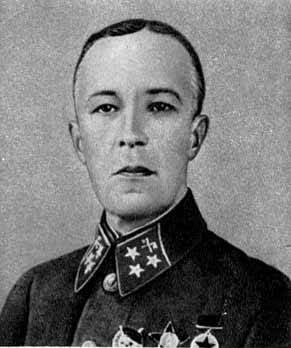
A talented engineer, General Karbyshev, in these years, developed the theory of the creation of engineering obstacle hubs and the harmonious tactics of using anti-personnel and anti-tank mines. In the same period, a large number of means for blasting standard explosive charges were developed and put into service (electric blasting machines for blasting caps, fire conductor). New anti-personnel mines (PMK-40, OZM-152, DP-1, PMD-6,) anti-tank mines (PTM-40, AKS, TM-35 TM-35) were developed, as well as a whole series of anti-vehicle mines, as well as counter-squad rides, anti-tank raids, TM-1941 TM-42, as well as a whole series of anti-tank mines . A radio-controlled object mine was created (a mine exploded on a radio signal). In XNUMX-XNUMX, it was precisely with the help of these mines that the buildings in Odessa and Kharkov, in which German headquarters were located, were blown up by radio signals from Moscow.
High training and equipment of the engineering troops of the Red Army ensured the success of the fighting at Khalkhin Gol (1939). In this desert area, they supplied the troops with the necessary amount of water, maintained a great length of the road, organized the camouflage of the troops (the Japanese air reconnaissance could not detect the accumulation of forces of the Red Army), ensured the successful crossing of the rivers during the offensive.
Complex tasks were solved by engineering troops during the Soviet-Finnish war. Here they had to fight with the defensive line created by the Finns, taking into account natural obstacles (a large number of lakes, rocky ridges, mountainous terrain, forests), with the use of additional reinforcements in the form of forest rubble, collapsed rocks and obstacles in the water.
It was much harder for the engineering troops in the first period of the Great Patriotic War.
By the beginning of June 1941, practically all engineering connections of the western direction were located on the construction of fortifications, on a new border in Poland. At the time of the outbreak of hostilities, they did not have weapons (only carbines), nor by motor transport, which allowed the Germans to easily seize the fortifications, the material means of the sappers, the personnel were partially destroyed, partially captured.
Therefore, advanced units of the Red Army entered the first battles with the Nazis without any engineering support.
It was necessary to urgently form new sapper units, for this purpose even the RVGK’s engineering and pontoon regiments were disbanded from the personnel of which new sapper battalions were formed.
In the North-Western and Northern fronts, the situation with the engineering troops in the early days of the war was better. Sappers successfully covered the withdrawal of troops, destroyed bridges, created impassable zones of barriers and destruction, put up minefields. On the Kola Peninsula, thanks to the competent actions of the engineering troops, the Germans and Finns were able to completely stop the offensive. Parts of the Red Army with a small amount of artillery and infantry, with the almost complete absence of tanks, using natural obstacles and non-explosive, and explosive barriers managed to create an invincible defense. So indestructible that Hitler refused to offensive action in the north.
By the beginning of the battle for Moscow, the situation with the engineering troops was no longer so deplorable, the number of engineering units could be brought to the 2-3 battalions for the army by the beginning of the battle, by the end there were already 7-8 battalions.
It was possible to create the Vyazemsky line of defense 30-50 kilometers in depth. Mozhaisk line of defense in 120 km. from Moscow. Directly at the borders of the city were also created defensive lines.
Without exaggeration, it can be said that besieged Leningrad survived and did not surrender thanks to the engineering troops. The city did not remain without supply thanks to the Road of Life, which runs along the ice of Lake Ladoga, which was laid and supported by the engineering troops.
On the approaches to Stalingrad, engineering troops erected 1200 kilometers of defensive lines. The permanent connection of the city with the left bank was provided by pontoon units of the engineering troops.
An important role was played by the engineering troops in the preparation of the defense at the Kursk Bulge.
From April to July, eight defensive lines were built, 250-300 depth kilometers. The length of the open trenches and communications reached 8 kilometers per kilometer of the front. 250 bridges were built and repaired with a total length of 6.5 km. and 3000 km. roads. Only in the defense zone of the Central Front (300km.) Was installed 237 thousand anti-tank, 162 thousand anti-personnel mines, 146 object mines, 63 radio kilometer, 305 kilometers of barriers. The consumption of mines on the directions of a possible strike reached 1600 min per kilometer of front.
Much work was done on masking objects and positions.
And even thanks to the sappers, the command was able to find out the exact time of the beginning of the German offensive and the direction of the strike. The sappers managed to capture their German colleague who was engaged in making passes in our minefields, which gave the exact time of the beginning of the attack.
The skillful combination of mine-explosive barriers, fortifications, fortifications and artillery fire allowed the Red Army to stand up in defense for the first time in the war and launch a counteroffensive.
The accumulated combat experience of the use of engineering troops also allowed them to successfully operate in all subsequent battles and battles for the liberation of their country and the countries of Europe.
Stalin in order to emphasize the importance of the engineering troops, in 1943, issued a decree introducing the title "Marshal of Engineering Troops" and "Chief Marshal of Engineering Troops" to the troops.
After the capitulation of Germany, the war with Japan began and here the engineering troops also successfully solved the tasks assigned to them. For the engineering units of troops advancing from the Primorsky Territory, the main task was to lay paths of movement in the taiga, through hills and swamps, the Ussuri, Sungach, Sungari, Daubikha and Northeast China rivers. In Transbaikalia, the main task of the engineering troops was to provide the troops with water, camouflage, designate the paths of movement along the desert steppe areas and lay the paths of movement through the mountains.
Successfully solved engineering troops and the task of breaking the long-term fortifications of the Japanese.
After the end of the war, the engineering troops, by virtue of their increased and deservedly recognized significance, were significantly reduced compared with other branches of the military. Moreover, after the war, the engineering troops had done a great job of demining the area, restoring communications, bridges and roads.
In the postwar years, the rapid technical development of the engineering troops began.
The sapper units were armed with the VIM-625 and UMIV mine detectors, sets of technical means for the remote disposal of ammunition and the IFT bomber. . In 1948, the armored vehicle bridge tractor MTU comes into service. Later, it was replaced by MTU-20 and MT-55 twenty-meter bridge-laying machines and a TMM heavy mechanized forty-meter bridge kit (on KNOR 4 vehicles) New anti-mine skidding tank trawls PT-54, PT-55, later KMT-XNNNXXNNXXNNXXTNNXX, PT-5, and KMT-XNNNXXNNXXNNXXNNXXNNXXNNXXTN-XNNXXT-XNUMX KNTXN-XNNXT-XNUMX were installed.
Significant development was gained by means of transport - inflatable and prefabricated boats, a more advanced pontoon park of the Chamber of Commerce and Industry, and a railway pontoon park of the PPS. At the beginning of the 60-ies, the troops received a PMP pontoon park.
Such a rapid technical equipment of the engineering troops quickly brought them to a qualitatively new level, when they were able to perform engineering tasks in accordance with the mobility and firepower of the main arms.
With the collapse of the USSR, the army began to fall apart, and with it, the engineering troops. The history of the new Russian army and, accordingly, the engineering troops began with it, but this is another story, a modern one.
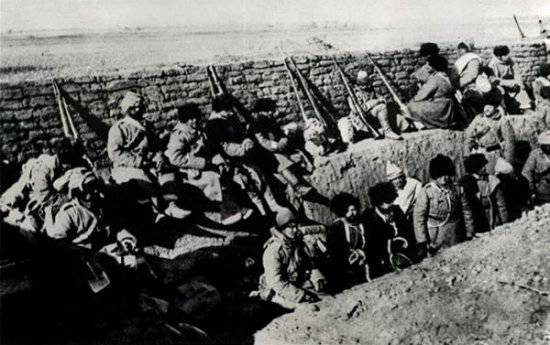
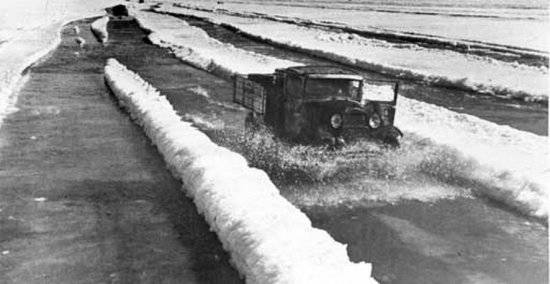
Information